After spotting the work of Leigh Suggs on Instagram several months ago, I knew we needed to know more about this artist from Richmond, Virginia. Just looking at each finished piece you can tell just how labor-intensive the process must be, from sketching, painting, taping, cutting, and cutting and more cutting. Each work is filled with movement, plays on light, and mesmerizing patterns that draw you in, enticing the eyes to take a second and third look.
Not long ago, the artist almost lost all of her artwork and frames due to flooding. Luckily CERF+, the non-profit devoted to supporting artists with financial relief, stepped in with a grant that allowed Suggs to build storage racks off the ground to protect the art. In this month’s Deconstruction, Suggs shares the laborious process it takes to make each piece of art. It’s easy to see just how tragic and what a loss it would have been had the flood destroyed her work!
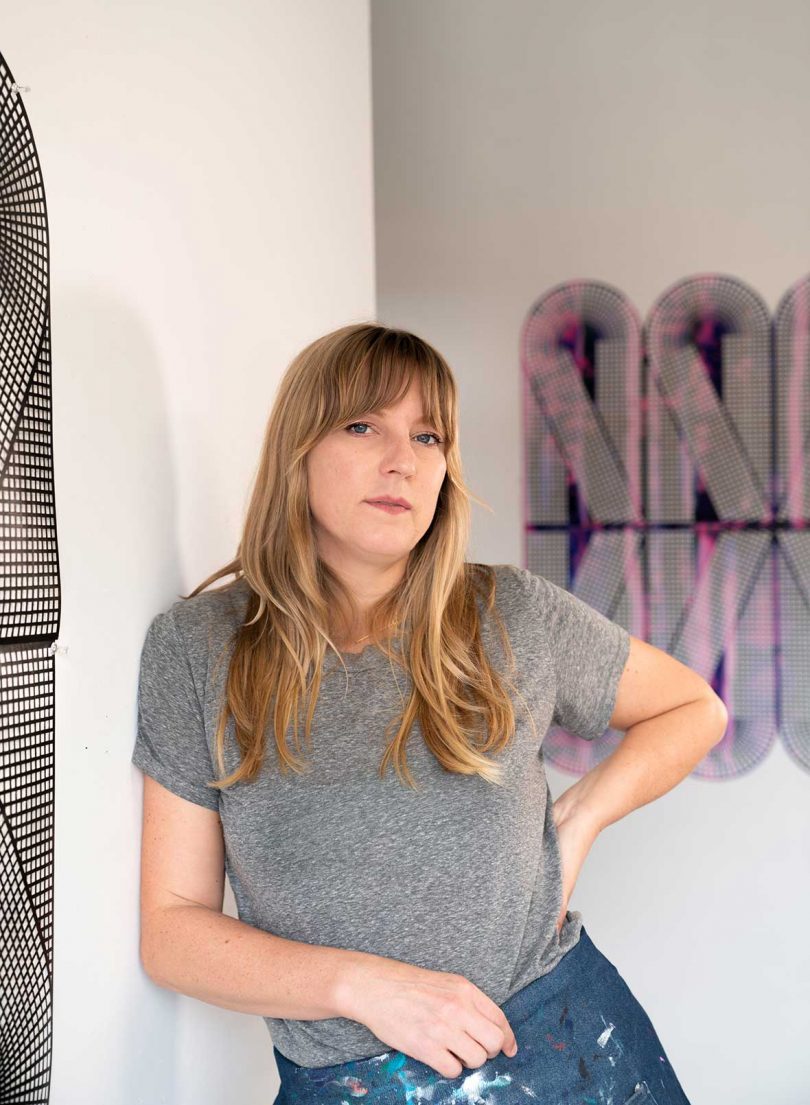
Leigh Suggs \\\ Photo: Page Ryland
“My work oscillates between concealing and conceding, veiling and revealing. Embedded in the visual language of craft yet transcending the media-specific, my forms escape fixity while transfixing. But I invite you to remain active and look to the human forces behind the seemingly machine-made—behind the nature of the images themselves. Patterns and grids mutate into radial webs as forms yield to the tension between positive and negative space. Tension itself replaces form as the guiding principle of my works in paper: the familiarity of the grid gives structure to our experience while the hand-cut “warps” and “wefts” nod to the painstaking, processual work of “pink collar” art and labor. I reassert the modernist grid’s ambiguity through its making, remaking, and unmaking; what can we see when we look beyond the grid? The work emerges as timely meditations on concentration and the risks of desensitization, ultimately asking the viewer to consider their own relationship to form.”
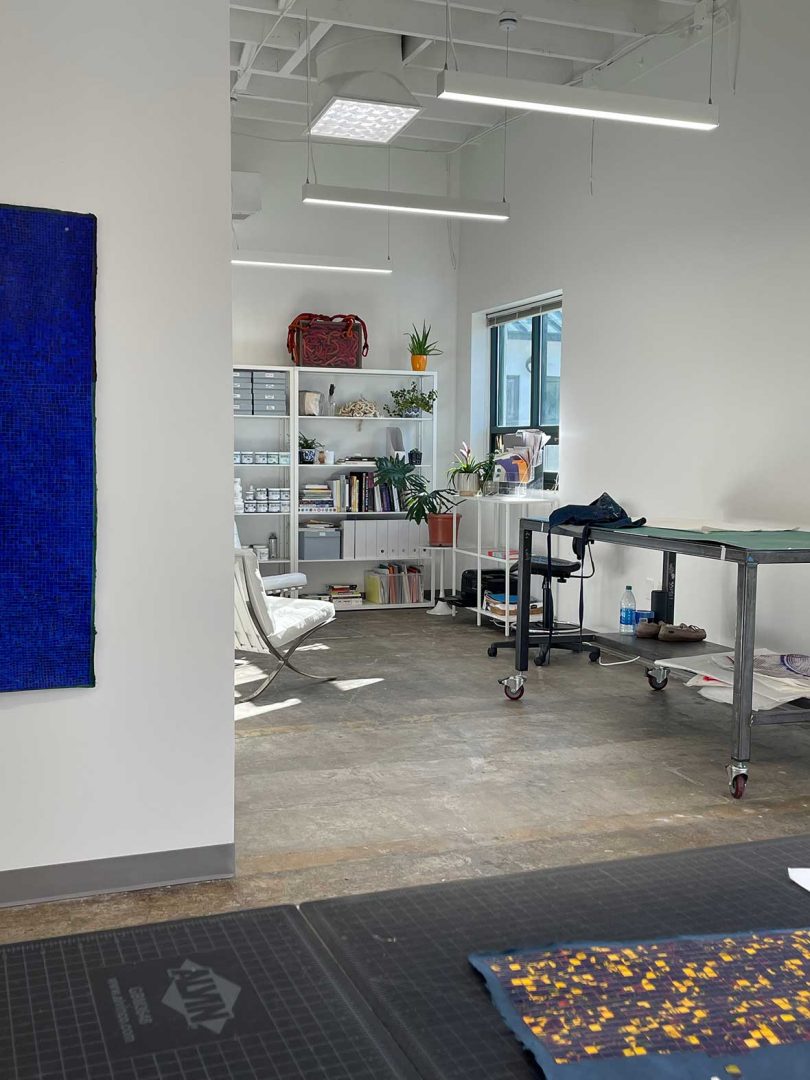
I am a southern native, born and raised in North Carolina. I came to Richmond for graduate school in 2013 and have remained here with my husband Daniel Rickey and our two cats. I am a full time studio artist and show all over the country. I have a fairly rigorous exhibition schedule, which I am so grateful for. I have a lovely bright white space that is in a shared building with several other artists – which provides camaraderie, collaboration, and friendship. I treat my studio as my second home… so I need lots of plants, light, and comfortable things. I am slowly making upgrades as I can, and thanks to a recent grant from CERF+, I have new storage racks for my work.
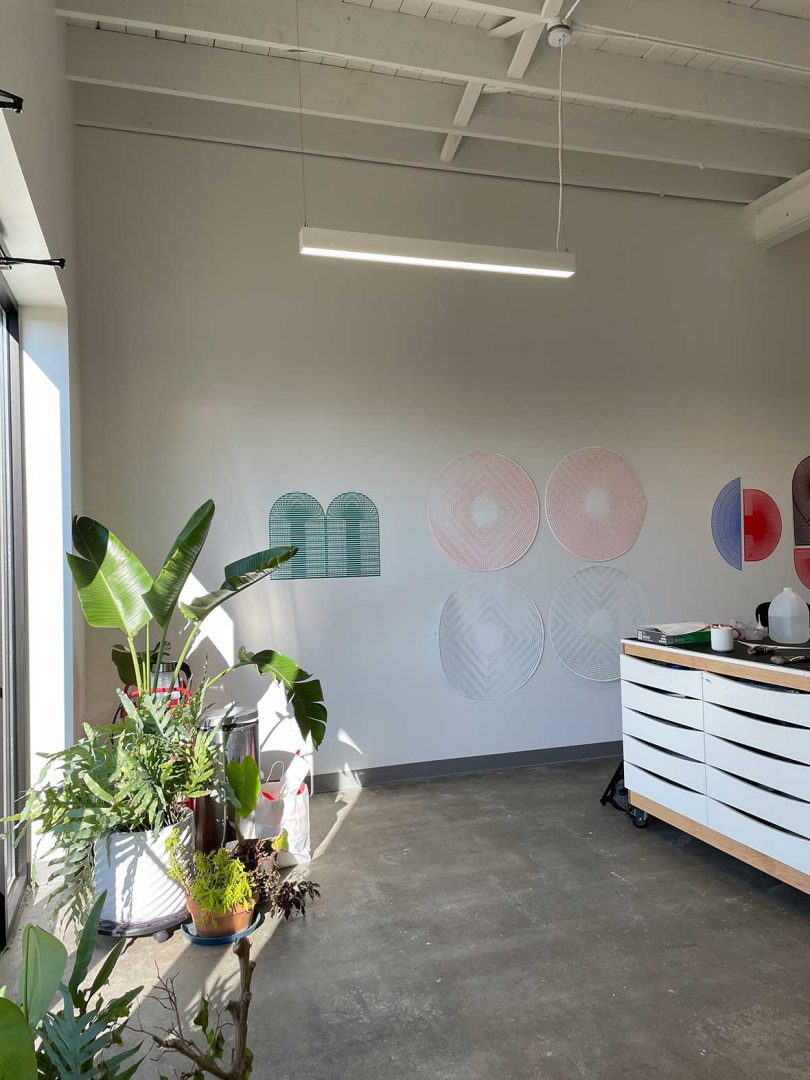
Because my process is methodical and intense (all hand-cut), I typically am working on three to four pieces in multiple stages at any given time and rotate between several different work tables. This allows me to move back and forth, giving my hands a chance to be used in multiple different ways within the day. Since my hands are my biggest tool, I try to treat them with respect and listen to them when they are tired.
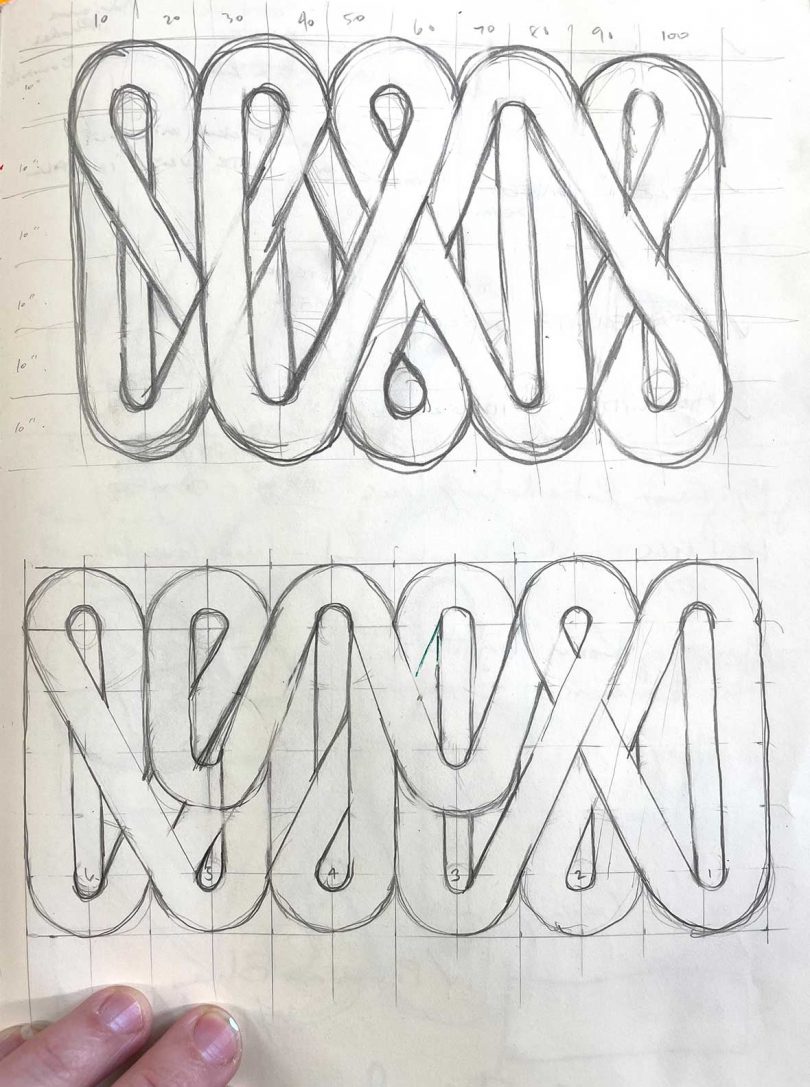
Drawing is a huge part of my process, and it all begins with sketches that can transform into multiple different pieces. I work through ideas, complications within those ideas, and make simple measurements before anything gets made.
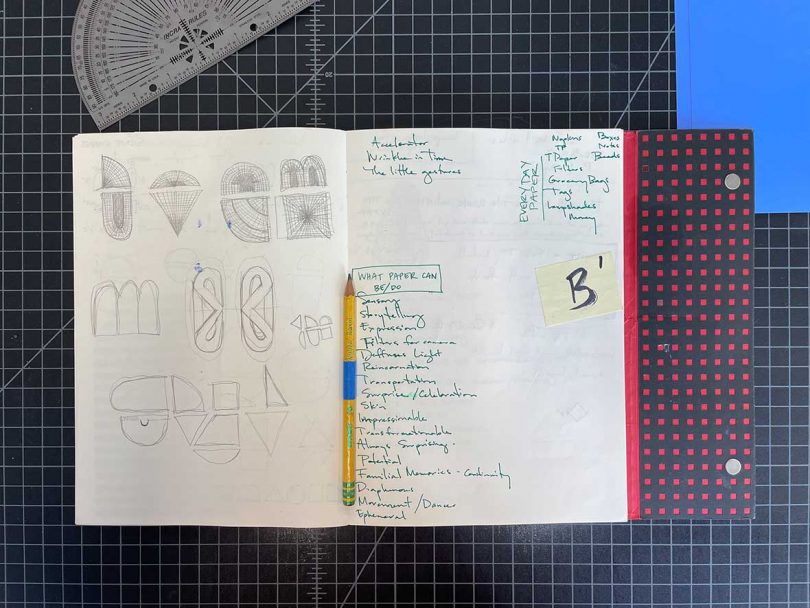
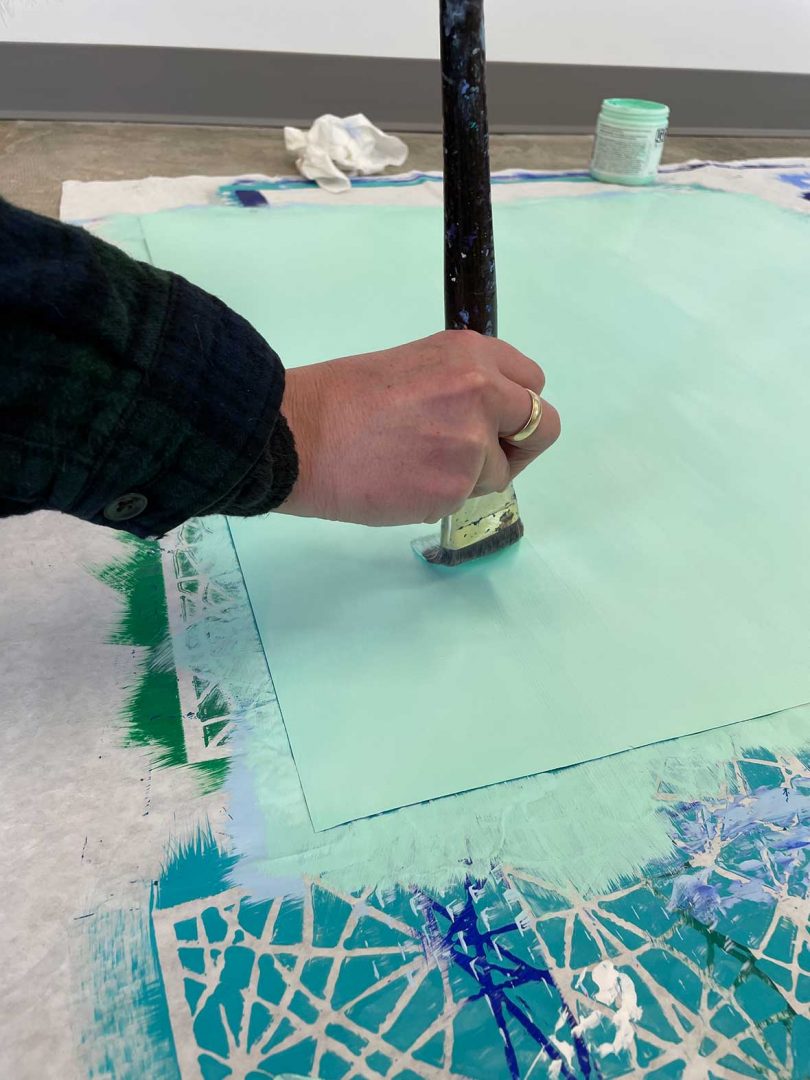
Conceptually and procedurally, color plays a big role. Color can alter perception of the work in so many ways, therefore it holds a lot of meaning. I work through many color combinations, oftentimes changing my mind towards the end and will paint over something without a second thought if need be. I am interested in what happens with contrasting stripes, but also large solid color fields. I typically paint the work before any cutting begins.
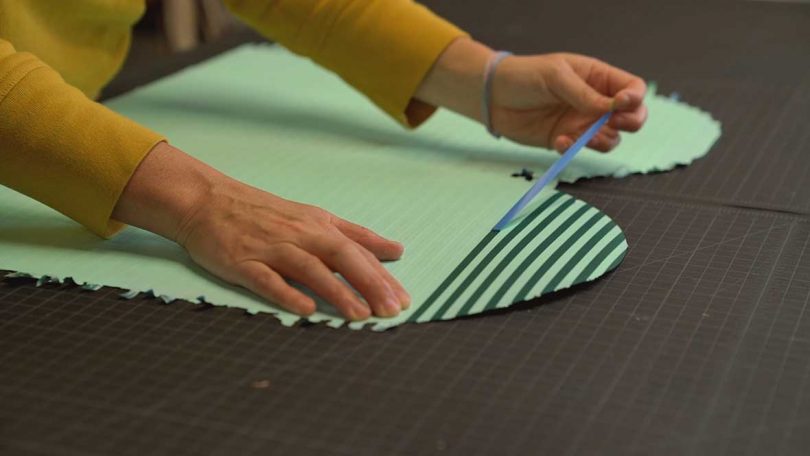
Photo: Page Ryland
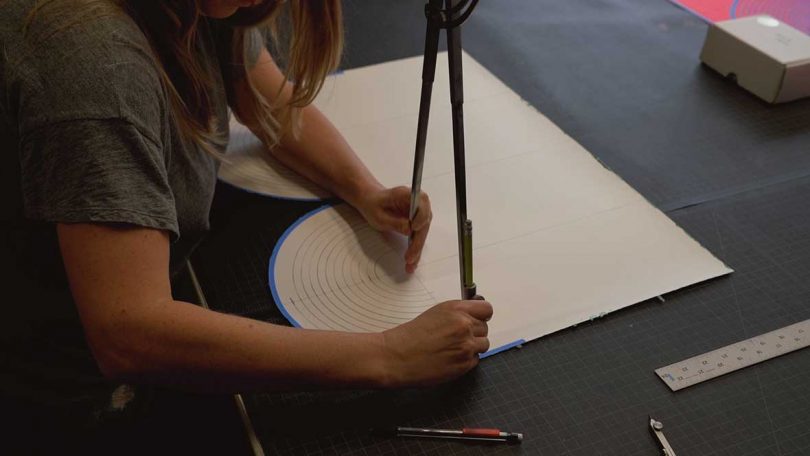
Photo: Page Ryland
Once the paint has cured, another phase of drawing begins. The arcs and grids are mapped out with basic drafting tools. I make edits and changes along the way, as this step allows me to begin to see the overall vision of the work.
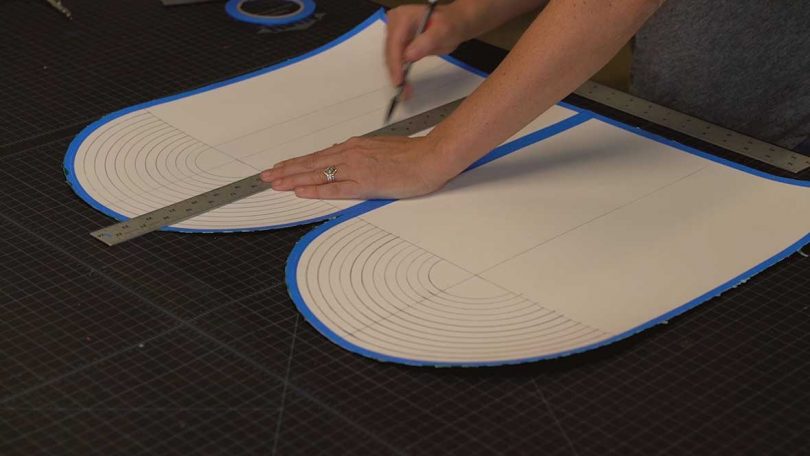
Photo: Page Ryland
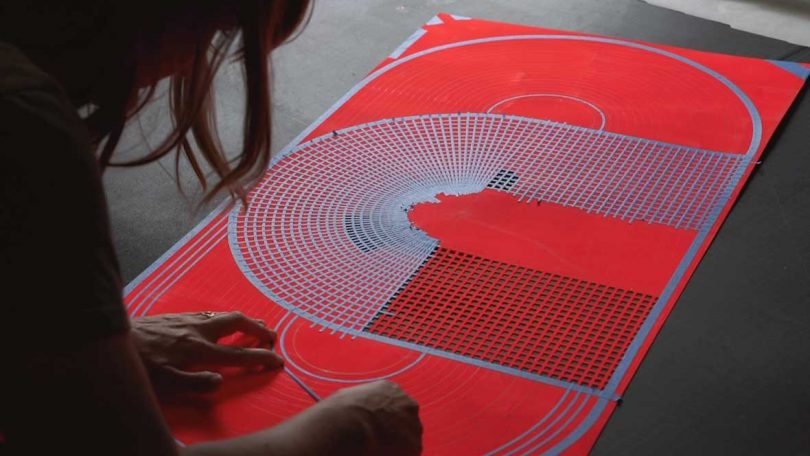
Photo: Page Ryland
The drawing is used as a guideline for me to place thin strips of blue painters tape. The tape provides a visual guide for the cutting process, but it also provides consistency for the warps and wefts of the grids I create. Because I am removing so much of the actual paper, I need to make sure the integrity of the piece still exists.

Photo: Page Ryland
Once the drawing & taping are complete, I begin the meditative but laborious process of cutting. I use an X-Acto knife and work on surfaces covered in cutting mats. The cutting can take weeks, sometimes months depending on the scale of the work. For me, this part needs to be done by hand…slight shifts and edits can happen again here, which no machine would be able to do. Yes, I make mistakes (which are repaired) – but again this is where the handmade becomes evident, and clearly makes the work personal.
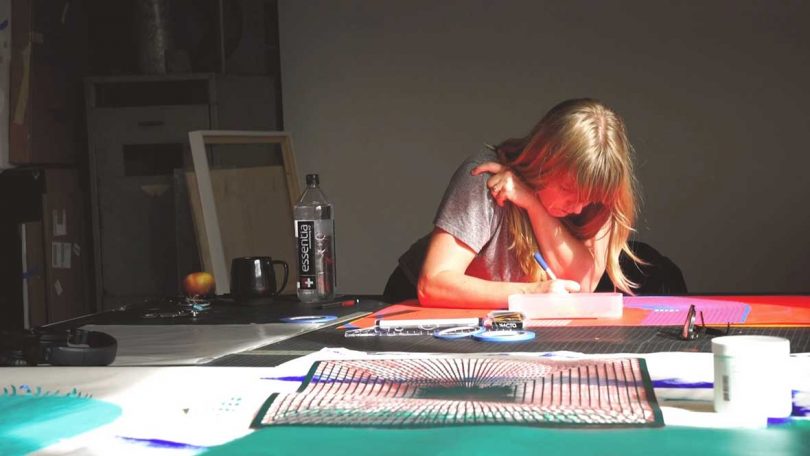
Photo: Page Ryland
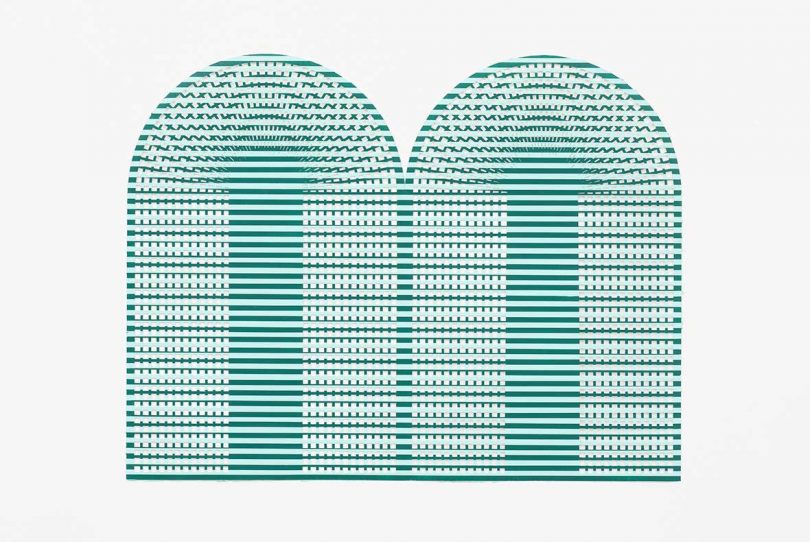
Photo: David Hunter Hale
Created through a precise and distinctive process of drawing, tracing, taping and painting, hand-cutting, perpetual addition and subtraction, my work is simultaneously tactile and conceptual, methodical and instinctual. Through the manipulation of shadows, color, and reflections, the intricate cut and seemingly woven patterns bring the painted Yupo to life, producing reflective surfaces, optical illusions, and vibrant intense colors.
The finished work above + below, before framing.
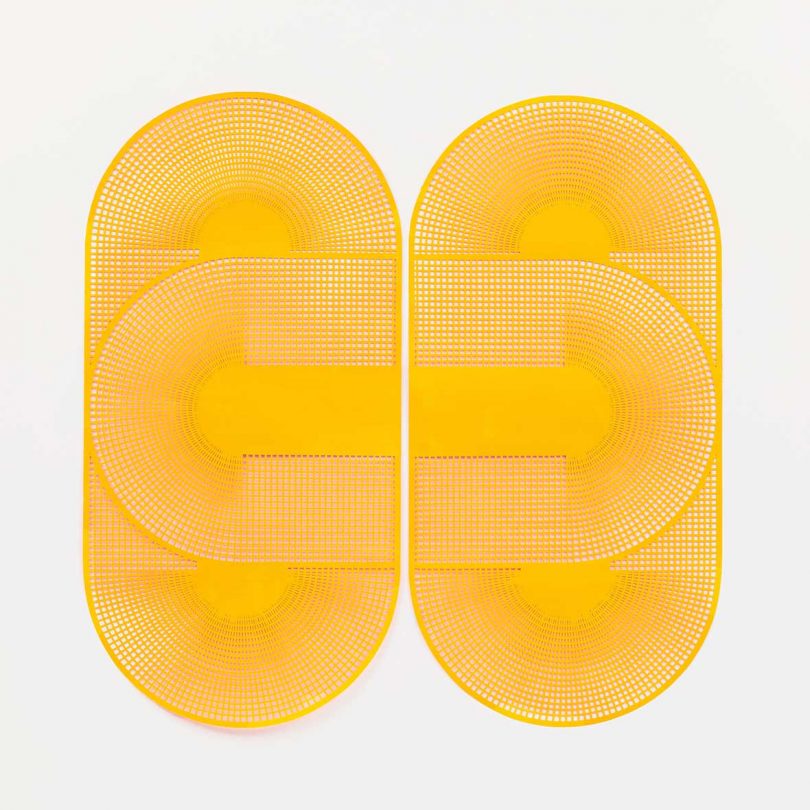
Photo: David Hunter Hale
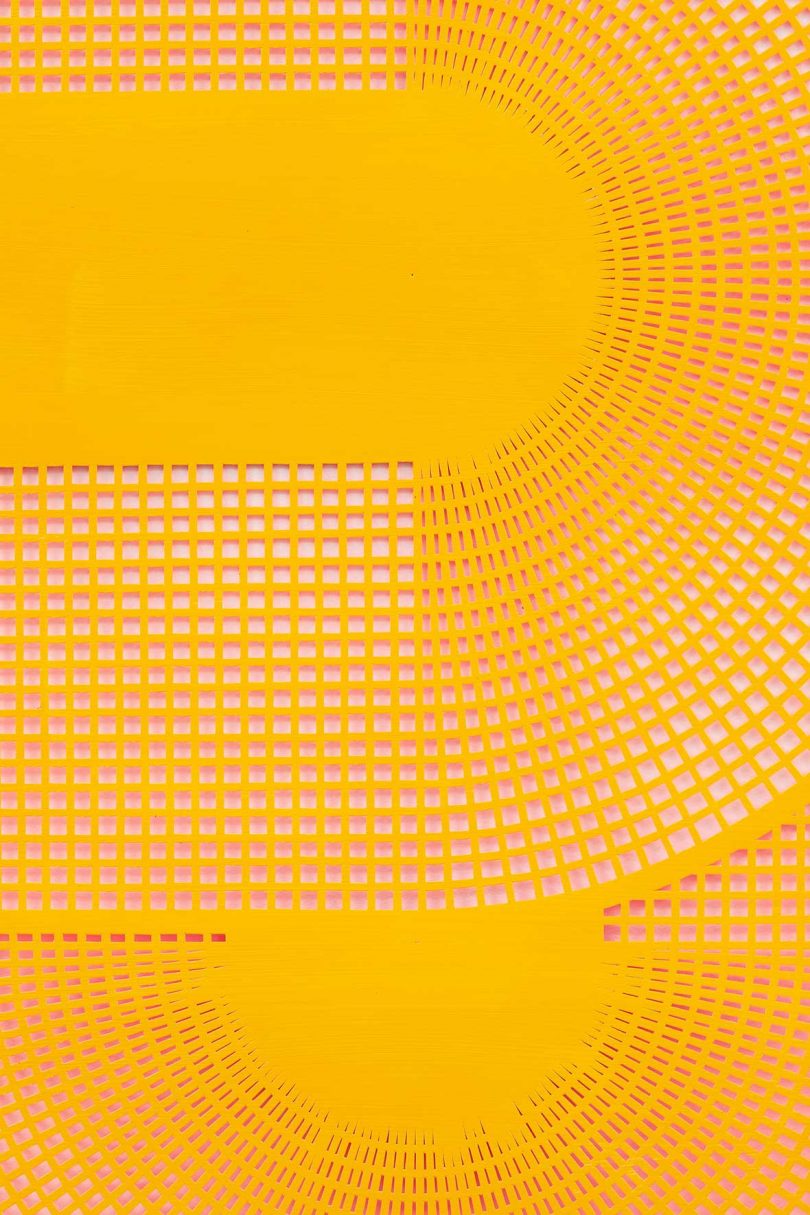
Photo: David Hunter Hale
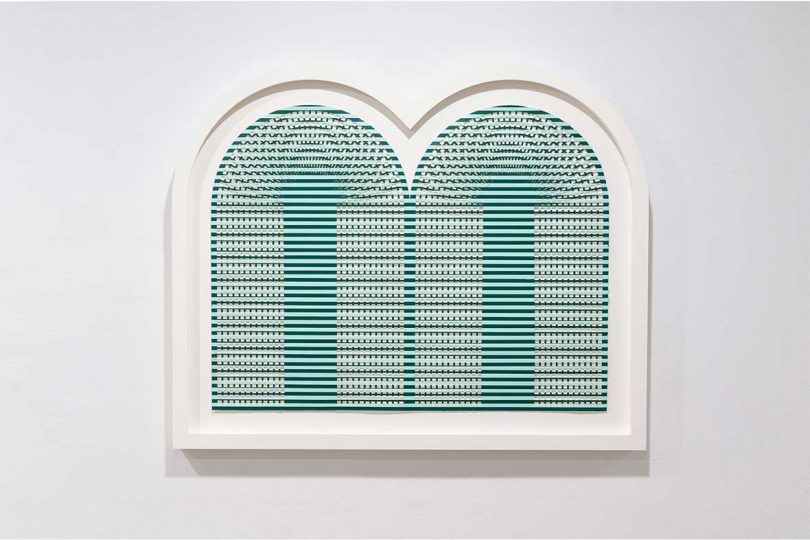
Photo: Massey Klein Gallery
Framed & installed for Massey Klein solo show that just ended April 16 at 124 Forsyth St.
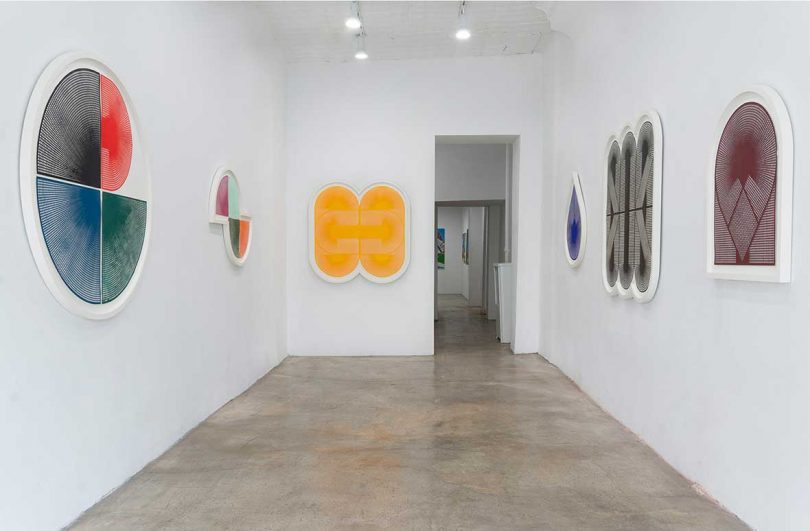
Photo: Massey Klein Gallery
For a more in depth look at Leigh Suggs’ process, watch this:
If you’re an artist in need or would like to donate to help artists, visit cerfplus.org!

Caroline Williamson is Editorial Director of Design Milk. She has a BFA in photography from SCAD and can usually be found searching for vintage wares, doing New York Times crossword puzzles in pen, or reworking playlists on Spotify.
You can follow Caroline Williamson on Twitter, Facebook, Pinterest, Instagram, and Linkedin. Read all of Caroline Williamson’s posts.
